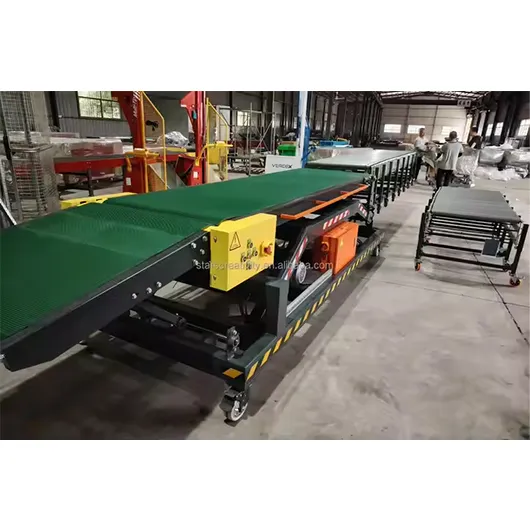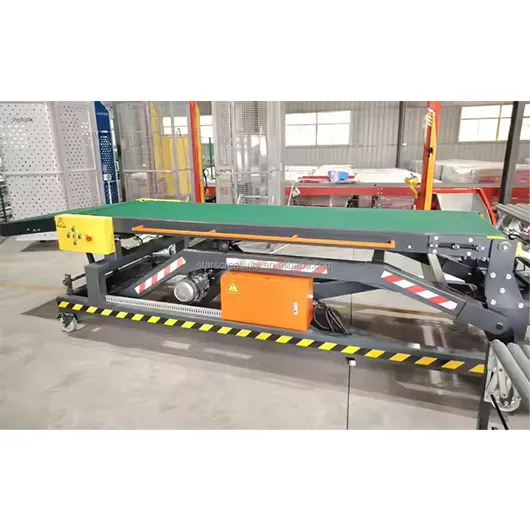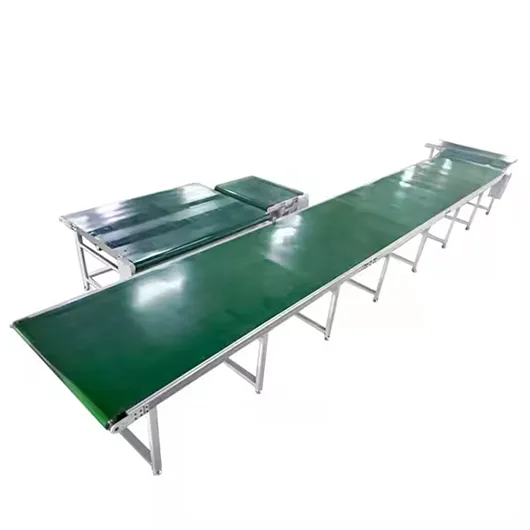Avoid your inquiry is delay response, please enter your WhatsApp/Skype along with the message, so we can contact you at the very first time.
We will reply you within 24 hours. If for urgent case, please add WhatsApp/WeChat: ,. Or call directly.
Conveyors are vital components in modern material handling systems. They make moving goods more efficient, reliable, and faster across industries. But how do they work, and what drives their efficiency?
The working principle of a conveyor is simple: it uses mechanical energy to move materials from one point to another using a continuous loop, belt, rollers, or chain.

Conveyors are used across manufacturing, logistics, and packaging industries. They reduce manual labor and increase productivity. Let’s dive into the types of control systems, how to calculate conveyor length, and understand standard conveyor sizes and RPM.
Conveyors are powered by control systems that regulate their operation. These systems ensure smooth, consistent flow and can even integrate with other machinery to automate the entire production line.
Conveyors typically use electric motors, sensors, and PLC (Programmable Logic Controller) systems for control. These systems regulate speed, direction, and load handling.

Control systems are integral for optimizing conveyor performance. Here’s a look at the types of control systems used for conveyors:
Electric motors are the primary power source for most conveyor systems. These motors are connected to the conveyor belt or rollers through gears or pulleys, enabling the movement of materials. Variable speed drives (VSD) are often used to control motor speed and, consequently, the conveyor’s speed.
PLCs are used to automate conveyor operations. A PLC is programmed to control various parameters like start/stop functions, speed, and direction based on inputs from sensors or user commands. For example, when the conveyor reaches a certain position or encounters an obstacle, the PLC can automatically stop or change direction.
Sensors like proximity sensors, optical sensors, and load cells are used to detect the presence of materials, their weight, or their position on the conveyor. Feedback systems help adjust operations in real time. For instance, if the load is too heavy, the system may slow down to prevent damage to the conveyor.
Conveyor control systems are often integrated with other automated systems in factories, such as robotic arms or packing machines. Using centralized control software, the entire production line can be synchronized to improve efficiency and reduce downtime.
Control systems are essential for making conveyors more efficient, versatile, and adaptable to changing production needs.
Calculating the length of a conveyor is crucial when designing or upgrading systems. Getting this calculation right ensures smooth operations and avoids issues like misalignment or overloading.
To calculate the conveyor length, you need to measure the horizontal distance2 between the start and end points of the conveyor, plus any incline or decline if applicable.
There are several methods for calculating conveyor length, depending on the type of conveyor and the space available. Here’s how to get the right measurements:
For a horizontal conveyor, simply measure the distance between the starting and ending points of the conveyor system. If the conveyor is on a straight path, the length is the horizontal distance between these two points.
Formula:
Conveyor Length (L) = Horizontal Distance (H)
If the conveyor is inclined or declined, you’ll need to account for the angle of the incline (theta) to find the length. The length of the conveyor is longer than the horizontal distance.
Formula:
Conveyor Length (L) = Horizontal Distance (H) / cos(theta)
Where theta is the angle of incline or decline.
If the conveyor has curves, calculate the radius of the curve and the angle of the bend. Add the length of the curve to the straight conveyor section to get the total length.
Formula:
Conveyor Length (L) = Straight Distance + Length of Curve
Using the correct formula ensures that you get accurate measurements to optimize the installation and functionality of the conveyor system.
Understanding the size of a standard conveyor is important for fitting it into your production space and choosing the right components.
The size of a standard conveyor depends on the application and the type of product it needs to transport. Common widths range from 12 inches to 48 inches, but they can be customized to suit your needs.

The size of a conveyor system is determined by its width, length, and capacity. These factors are influenced by the items being transported, the available space, and the desired throughput.
The width of the conveyor is one of the most important size parameters. For small products like packages, the conveyor width typically ranges from 12 inches to 24 inches. For larger items like pallets or bulk materials, the width can go up to 48 inches or more.
The right width ensures that the items are securely transported without risk of them falling off the edges.
As we discussed, conveyor length depends on the layout of your facility. It can range from a few feet to hundreds of feet. The size of the conveyor must be carefully planned based on the available floor space and the distance between processing stations.
The load capacity refers to how much weight the conveyor can safely carry. For light-duty systems, the capacity might be as low as 10-20 kg per meter, whereas heavy-duty conveyors can handle hundreds of kilograms per meter.
The height of the conveyor should be ergonomic for operators and match the workflow in your facility. It is typically adjustable to fit different types of workstations.
Choosing the right conveyor size ensures smooth operations and helps in maintaining a consistent workflow.
The RPM4 (Revolutions Per Minute) of a conveyor refers to the speed at which the conveyor’s rollers or belts move, which directly affects how fast products are transported.
The RPM of a conveyor is determined by the motor’s speed and the gear ratio between the motor and the conveyor system. It’s crucial to match the RPM with the speed requirements of the production line.
RPM is a critical factor in determining conveyor speed and overall efficiency. Here’s how RPM is calculated and adjusted:
To calculate the speed of a conveyor in terms of distance per unit time, use the formula:
Conveyor Speed (S) = (RPM × Diameter of the Pulley × π) / 60
This formula takes into account the RPM and pulley size to give you the speed at which items move along the conveyor.
To adjust the RPM of the conveyor, you can modify the motor’s speed. Many modern conveyors use variable frequency drives (VFDs) that allow for precise speed control. If you need to increase or decrease the speed, adjusting the RPM can help match the production requirements.
Higher RPM generally means faster transportation of materials. However, the load capacity of the conveyor must be considered as well. Too high an RPM can lead to faster wear or damage to fragile products. It’s important to balance speed with load handling to avoid compromising product integrity.
Conveyors with high RPM often require more energy, so it’s essential to balance speed with energy usage. Optimizing RPM can lead to energy savings while maintaining productivity.
The RPM of a conveyor system is a critical component that affects both throughput and energy consumption. Adjusting it based on the needs of the production line can ensure maximum efficiency and cost-effectiveness.
Understanding the working principle of a conveyor is vital for optimizing material handling processes. From the type of control system to calculating length and selecting the right size, every detail contributes to the conveyor’s performance. By properly assessing your needs and selecting the right conveyor parameters, you can improve both speed and reliability in your operations.
Discover the importance of sensors and feedback loops in optimizing conveyor performance and ensuring smooth operations. ↩
Measuring horizontal distance is crucial for ensuring proper alignment and functionality of conveyor systems, preventing operational issues. ↩
Choosing the right conveyor length is essential for optimizing space and workflow. Check this resource for expert guidance. ↩
Understanding RPM is vital for optimizing conveyor performance and efficiency. Explore this link to learn more about its significance. ↩